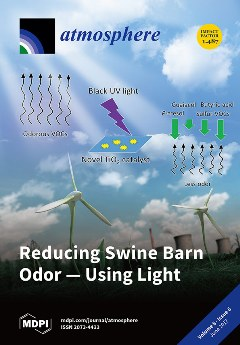The effect of vegetation on temperature is an emerging topic in the climate science community. Existing studies have mostly examined the effects of vegetation on daytime temperature (
Tmax), whereas this study investigates the effects on nighttime temperature (
Tmin
[...] Read more.
The effect of vegetation on temperature is an emerging topic in the climate science community. Existing studies have mostly examined the effects of vegetation on daytime temperature (
Tmax), whereas this study investigates the effects on nighttime temperature (
Tmin). Ground measurements from 53 sites across northeastern China (NEC) from 1982 to 2006 show that early summer (June)
Tmax and
Tmin increased at mean rates of approximately 0.61 °C/10 year and 0.67 °C/10 year, respectively. Over the same period, the satellite-based Normalized Difference Vegetation Index (NDVI) decreased by approximately 0.10 (accounting for 18% of the climatological NDVI for 1982–1991). It is highlighted that a larger increase in
Tmax (
Tmin) co-occurred spatially with a larger (smaller) decrease in NDVI. Deriving from such spatial co-occurrences, we found that the spatial variability of changes in
Tmax (i.e., Δ
Tmax) is negatively correlated with the spatial variability of changes in NDVI (i.e., Δ
NDVI), while the spatial variability of changes in
Tmin (i.e., Δ
Tmin) is positively correlated (
r2 = 0.10;
p < 0.05) with that of Δ
NDVI. Similarly, we detected significant positive correlations between the spatial variability of Δ
NDVI and the change in surface latent heat flux (
r2 = 0.16;
p < 0.01) and in surface air specific humidity (
r2 = 0.28;
p < 0.001). These findings on the spatial co-occurrences suggest that the vegetation growth intensifies the atmospheric water vapor through evapotranspiration, which enhances the atmospheric downward longwave radiation and strengthens the greenhouse warming effects at night. Thereby, the positive correlation between Δ
NDVI and Δ
Tmin is better understood. These results indicate that vegetation growth may not only exert effects on daytime temperature but also exert warming effects on nighttime temperature by increasing atmospheric water vapor and thus intensifying the local greenhouse effect. This study presents new observation evidence of the effects of vegetation on local temperature.
Full article





